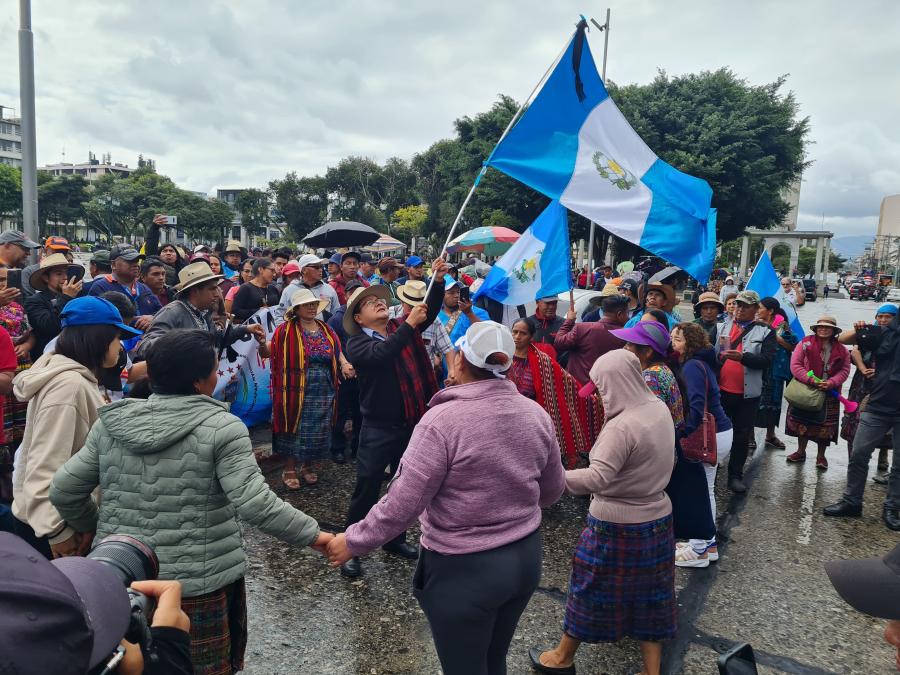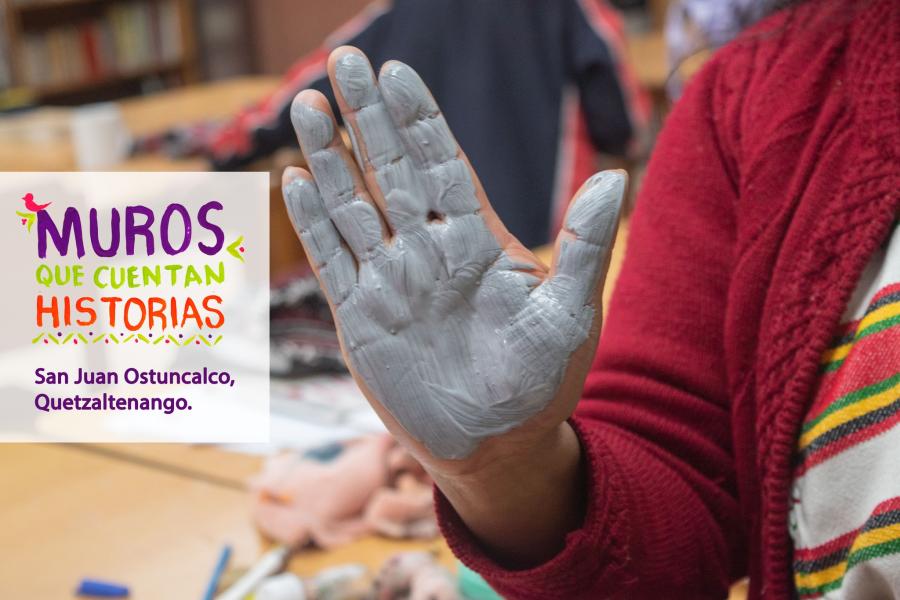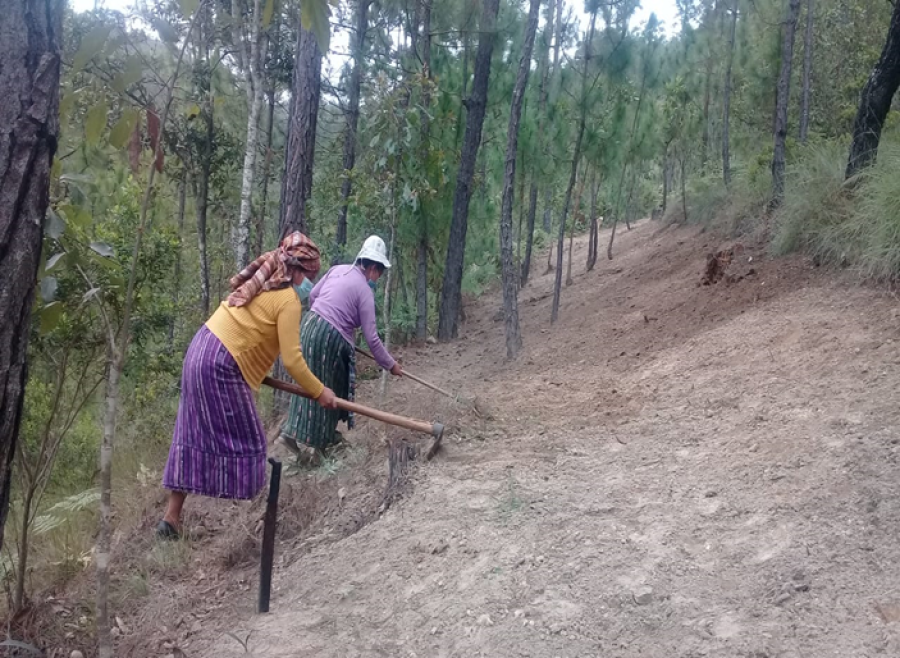In addition to the large number of Guatemalan Indian refugees in camps in Mexico along the border between Guatemala and Mexico north of the Panamerican Highway, there is a substantial number of refugees not in camps in an area along the southern border between Chiapas and Guatemala, from the coast almost to the Panamerican Highway. Guatemalans have traditionally crossed the border in this region for economic reasons and continue to do so, now for reasons of survival. Those who cross the border here are almost all Mayans from the several distinct language groups that people the departments of Huehuetenango and San Marcos.
Citizens of both countries along the border refer familiarly and frequently to "the other side" as an extension of known territory; many have traveled to the other side in the past in pursuit of economic activities or social services; many understand or speak the closely related languages on the other side; many are aware that the Mexican side of the border was once part of Guatemala. There are Mayans living on the Mexican side in sizeable communities who came from Guatemala several generations ago and who have been integrated into Mexican border towns, and a large number of Guatemalans have regularly crossed the border to work in coffee plantations. The border has never been a strong barrier to travel and communication for the people living along it.
Those Guatemalans who settled in Mexico several generations ago come from Mayan language groups which are still very large in Guatemala. In Mexico they have settled primarily in rural areas on the outskirts of towns rather than in the centers, and like Mayans longer resident in the area, have been assimilating to a general peasant way of life. This means that they have discarded a number of the elements, both superficial and more substantial, of Mayan tradition, and have replaced them with other Mexican traditions. Many of them no longer speak a Mayan language, most have ceased making and wearing distinctive dress, traditional ritual is attenuated, and people in these communities marry outsiders. Nonetheless, there is still recognition of an indigenous identity and heritage.
Recent Guatemalan refugees along the southern border have settled on private Mexican lands rather than in camps. Some of the newcomers arrived in Mexico fleeing political violence at home; others, who came to work on the plantations, stayed on to avoid violence. They live more or less inconspicuously in compounds generally located outside town centers, where they hope to escape official notice. Although it is impossible to count them, it has been estimated that there may be as many as 50,000. The refugees may pass in time as Mexicans, but meanwhile they are severely restricted in movement because they have no legal documentation. In Mexican communities refugees receive some unofficial aid, from both the Catholic Church and private individuals. Their presence is well known locally, although many nearby Mexicans have little or no interaction with them since the compounds are isolated and the refugees never participate in town events.
Moved by the plight of those who arrive penniless among them, local Mexicans are more aware of the immediate human drama than of the national and international ones in which they take a small but compassionate role. They are somewhat remote from their own national government structures and generally uninformed and inarticulate about political relations in Guatemala. Nevertheless, they feel compelled to aid survivors whose testimony of violence is so shocking it sometimes seems exaggerated - until confirmed by direct evidence such as brutally tortured bodies floating down rivers into Mexico. Although they are often uncertain about the motives for the new settlements and ambivalent about the eventual consequences, local Mexicans admire the industry and humility of their new neighbors and seem willing, at least for the present, to continue to aid them by providing land to settle on and to farm, wage labor opportunities, and official silence about their presence. Ambivalence about welcoming large numbers of people to a region that is already economically strapped is understandable, but so far sympathy outweighs resentment.
Refugees in this area of Mexico seem to be creating new communities. They are building self-sufficiency through wage labor and cultivation, and are establishing structures to solve problems of health, education, and survival. This is in spite of the fact that the refugee groups are composed of people who speak different languages. One consequence of the language diversity is the rapid rise of Spanish as a common language, a process made essential because Spanish is the dominant language among Mexicans in the area. All refugees have also abandoned distinctive dress. The process of assimilation has begun. However, in the event that there is a Mexican government crackdown on refugees outside of camps, the communities are still extremely vulnerable. Although inconspicuous, they are still identifiable, simply because strangers in small towns are obvious and cannot be hidden. Additionally, the possibility of increased local resentment of refugees on economic grounds may prove dangerous with heightened government scrutiny.
There is a smaller number of refugees scattered throughout Chiapas that has, through one means or another, evaded border immigration patrols and settled in and around large towns in the interior of the state. The motivation for moving away from the border seems to be a concern for safety from possible deportation or removal to the camps. A secondary motivation is to seek greater economic or social opportunity in cities. A significant proportion of these refugees seems to be people who were young elites in their home towns. They are educated, leaders, and already have experience in cities. Among such refugees there are networks which receive information from the camps, occasionally pass messages across the border, aid recent immigrants and link longer-term residents in mutual support groups. Many of these refugees shun any sort of contact with church or refugee aid organizations through fear of identification, but seek very unofficial aid through personal contacts and from sources of social services available to Mexican citizen's.
For refugees living in the interior of Chiapas, the most serious problem is documentation. Access to housing, jobs, education and social services requires papers. There is an exhorbitant black market in illegal documents, but refugees without resources have great difficulty obtaining papers. Increasingly, neighborhoods are searched and transportation checkpoints established to find people without documentation. Such tactics pose severe hardships for refugees who are more dependent on mobility for economic survival and information than are those on the border.
In the large towns the Mexican population is not as aware of the refugees as it is on the border. Once the refugees remove their traditional dress, they divest themselves of external indigenous identity and blend with the local underclass. In the interior of Chiapas, indigenous communities contrast strongly with those on the border in terms of their distinctiveness from non-Mayan groups and their inaccessibility to outsiders. Mayan communities in the interior are closed; therefore refugees try to be indistinguishable from the non-Mayan population. While the population of the towns do not have as much personal sympathy for the plight of refugees, they are, at least, anonymous. The illegal status of many refugees is apparently known or suspected by their landlords and employers. Although there is a certain amount of economic exploitation of refugees practiced by landlords, bosses, and shopkeepers - again expectable within the economic structure of this part of Mexico - local contacts rarely harass the refugees or report them to immigration officials.
Assimilation to the non-Mayan population in the interior will be rapid. Traditional clothing has been eliminated. Language shift is already underway, involving the almost complete suppression of the use of a Mayan language and substantial shift in Spanish usage as people replace Guatemalan characteristics of Spanish with Chiapan characteristics. Refugees in the interior are totally isolated from traditional ritual and from community or kin networks.
Parents are now facing a dilemma in making a choice between rapid Mexicanization with the inevitable loss of a unique Mayan cultural identity or encouraging the maintenance of a Mayan identity and way of life, hoping for a possible return to their homes. Since many refugees have small children, this is a practical and real dilemma and not merely a philosophical one. Clearly, maintaining a Mayan way of life is a short term threat and possibly very dangerous, but the wish to go home some day is still strong. The dilemma is probably stronger for refugees in the interior than for those on the border, but it is serious for both groups. While people worry about the choice and are very articulate about it, they are inevitably forced to choose assimilation.
Under such conditions of forced change, refugees frequently analyze their choices and talk about the advantages and disadvantages of various decisions. The negative aspects of such choices appear to have a greater effect on women than on men. The language shift is more difficult for women since their Spanish is generally less fluent than that of the men - they did not use Spanish for daily business. Men in many Guatemalan communities have already shifted to Western dress while few women have. Consequently women feel uncomfortable, ugly, and exceedingly poor in the new clothes. If a family can buy false papers, they are invariably bought first for a man. Men have greater need for papers if they are pursuing wage labor, but the lack of papers further restricts the mobility of women. Since women spend more time in child care than men, the burden of eliminating obvious signs of Guatemalan identity through child rearing practices falls largely on them. If it is possible to differentiate levels of stress for a population which left home under threat of death, then the stress is greater for women than for men.
The resilience of the refugees is impressive. The emerging social structure in their new communities reflects strong Mayan cultural patterns and is hopeful of a reasonable future. It is mutually supportive and draws on the skills of many different people in each group. We were continually struck by the fineness of people in enormously difficult circumstances and consider that Guatemala's greatest tragedy is the loss of these people.
Article copyright Cultural Survival, Inc.



